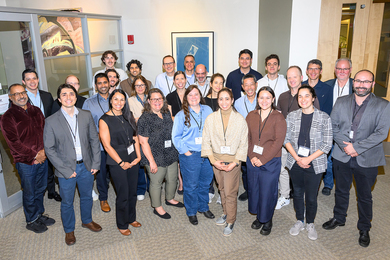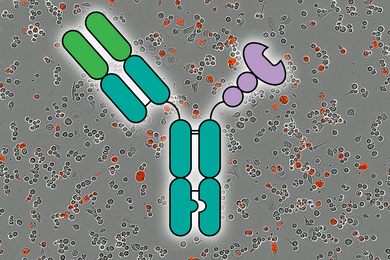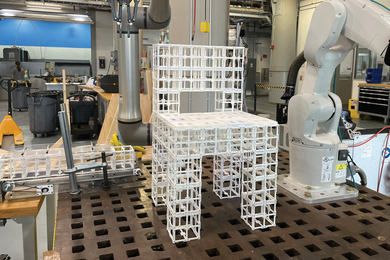In its latest mission, MIT Sea Grant's Autonomous Underwater Laboratory (AUVL) sent an unmanned submarine to study marine habitats in Massachusetts Bay. The voyage above Stellwagen Bank marked the first dive for the Lab's Odyssey IIB class vehicles, the most recent addition to a fleet of small, adaptable autonomous underwater vehicles (AUVs) built to run oceanographic missions on non-military-sized budgets.
With the vast decline in New England fisheries, accurate assessment of stocks and their habitats is sorely needed. While remotely operated vehicles are effective at collecting data on animal abundance and distribution, low-cost, fast-swimming AUVs are better equipped to map wide areas efficiently.
The Odyssey IIB was launched from a National Oceanographic and Atmospheric Administration research vessel roughly 10 miles north of Provincetown, in popular feeding grounds for humpback, finback and right whales. The vehicle dove 65 meters to within two meters of the ocean floor, collecting video and acoustic data.
"This was the first time we've taken bottom video for a scientific mission," said the AUVL's manager, James Bellingham. By correlating the video and acoustic data, researchers can accurately measure depths and roughness of the sea floor, and also assess fishery stocks. The AUV also took measurements of water temperature and salinity, which provide critical information about where nutrients and animals will congregate.
The research was a collaboration with the National Undersea Research Center (NURC) at the University of Connecticut, with support from the Stellwagen Bank National Marine Sanctuary. NURC's marine program director, Peter Auster, hopes to rely more on AUVs in the future for his fisheries research. "Odyssey is good for mapping features of habitat you can't see with sidescan sonar because of murky water," he said.
The Stellwagen cruise also gave the AUVL a chance to test equipment to be used next June, when an Odyssey IIB will map out an ocean front in the Haro Straits off the coast of British Columbia. Similar to weather fronts, ocean fronts are areas where two masses of water meet. These regions have high levels of biological activity, and maps of such areas will prove useful both to marine biologists and physical oceanographers.
Funded by the Office of Naval Research, the five new Odyssey IIB vehicles are third generation AUVs. While MIT Sea Grant conducts research with two vehicles, others are out on loan to collaborators, including the Woods Hole Oceanographic Institute.
A version of this article appeared in MIT Tech Talk on November 8, 1995.





